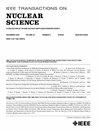空间x射线成像大矩阵读出asic中带子环路补偿的像素级低差稳压器设计
IF 1.9
3区 工程技术
Q3 ENGINEERING, ELECTRICAL & ELECTRONIC
引用次数: 0
摘要
在能量分辨x射线成像中,非理想因素会影响用于像素读出的专用集成电路(asic)。在像素阵列中集成低差(LDO)稳压器有助于提高一致性,但在严格的功率、稳定性和面积限制下,像素级LDO的设计面临着重大挑战。本文提出了一种新的像素级LDO结构,采用子环(SL)补偿来同时提高稳定性和瞬态响应特性。SL结构产生左半平面(LHP)零以抵消二次极,并直接由误差放大器(EA)的第一级驱动,而不需要额外的运算放大器。这种方法使补偿电容降低3倍,同时在所有负载条件下保持超过60°的相位裕度(PM)。此外,我们首次引入了一种基于ldo的校准方法,以减轻由电源和地电压下降以及制造不匹配引起的像素间增益不一致。采用130纳米CMOS工艺设计并制作了原型芯片。LDO仅占用1500~\mu $ m2的芯片面积,同时消耗26~\mu $ a的静态电流。当部署在超像素结构中验证校准方案时,测量到的增益变化标准差从0.25(未校正)提高到0.08 mV/fC(校正)。本文章由计算机程序翻译,如有差异,请以英文原文为准。
Design of a Pixel-Level Low-Dropout Regulator With Sub-Loop Compensation in Large Matrix Readout ASICs for Space X-Ray Imaging
In energy-resolved X-ray imaging, non-ideal factors impact the application-specific integrated circuits (ASICs) for pixel readout. Integrating a low-dropout (LDO) regulator within the pixel array helps to improve consistency, but the design of pixel-level LDOs faces significant challenges under stringent power, stability, and area constraints. This article proposes a novel pixel-level LDO architecture employing sub-loop (SL) compensation to simultaneously enhance stability and transient response characteristics. The SL structure generates a left-half-plane (LHP) zero to cancel the secondary pole and is driven directly by the first stage of the error amplifier (EA) without requiring additional operational amplifiers. This approach achieves a $3\times $ reduction in compensation capacitance while maintaining a phase margin (PM) exceeding 60° across all load conditions. Furthermore, we introduce for the first time an LDO-based calibration method to mitigate the inter-pixel gain inconsistency caused by supply and ground voltage drops and manufacturing mismatches. A prototype chip has been designed and fabricated using a 130-nm CMOS process. The LDO occupies only $1500~\mu $ m2 of die area while consuming a quiescent current of $26~\mu $ A. When deployed in super-pixel constructions to validate the calibration scheme, the measured standard deviations of gain variation improved from 0.25 (uncorrected) to 0.08 mV/fC (corrected).
求助全文
通过发布文献求助,成功后即可免费获取论文全文。
去求助
来源期刊

IEEE Transactions on Nuclear Science
工程技术-工程:电子与电气
CiteScore
3.70
自引率
27.80%
发文量
314
审稿时长
6.2 months
期刊介绍:
The IEEE Transactions on Nuclear Science is a publication of the IEEE Nuclear and Plasma Sciences Society. It is viewed as the primary source of technical information in many of the areas it covers. As judged by JCR impact factor, TNS consistently ranks in the top five journals in the category of Nuclear Science & Technology. It has one of the higher immediacy indices, indicating that the information it publishes is viewed as timely, and has a relatively long citation half-life, indicating that the published information also is viewed as valuable for a number of years.
The IEEE Transactions on Nuclear Science is published bimonthly. Its scope includes all aspects of the theory and application of nuclear science and engineering. It focuses on instrumentation for the detection and measurement of ionizing radiation; particle accelerators and their controls; nuclear medicine and its application; effects of radiation on materials, components, and systems; reactor instrumentation and controls; and measurement of radiation in space.
 求助内容:
求助内容: 应助结果提醒方式:
应助结果提醒方式:


